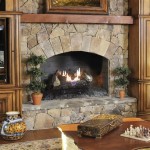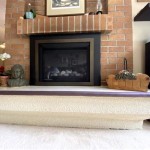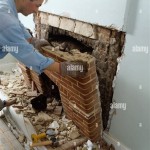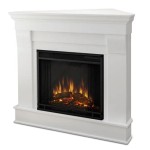Vintage Gas Fireplace Inserts: A Timeless Blend of Aesthetics and Efficiency
Vintage gas fireplace inserts offer a unique opportunity to combine the classic aesthetic of a traditional fireplace with the convenience and efficiency of modern gas technology. These inserts, designed to fit within existing fireplace openings, provide supplemental heating while retaining the charm and character of bygone eras. Understanding the nuances of vintage gas fireplace inserts, including their history, benefits, selection process, and maintenance requirements, is crucial for those considering this addition to their homes.
The history of gas fireplaces dates back to the late 19th century, mirroring the rise of natural gas as a readily available energy source. Early models often mimicked the look of coal or wood-burning fireplaces, featuring intricate castings and detailed designs. As technology progressed, gas fireplaces evolved in both efficiency and safety, leading to the development of inserts designed to retrofit existing masonry fireplaces. Vintage gas fireplace inserts, therefore, represent a specific period in this evolution, reflecting the design trends and manufacturing techniques of their time.
The appeal of vintage gas fireplace inserts stems from several factors. Firstly, they offer a distinct aesthetic that is often difficult to replicate with modern designs. The castings, detailing, and overall style of these inserts can complement the architecture of older homes, contributing to a sense of historical authenticity. Secondly, they provide a functional heating solution that is more efficient and convenient than traditional wood-burning fireplaces. Gas fireplaces eliminate the need for chopping wood, building fires, and cleaning up ashes, while offering precise temperature control and consistent heat output. Finally, vintage inserts, when properly maintained, can be a relatively sustainable option, reducing reliance on fossil fuels compared to inefficient open fireplaces.
Key Point 1: Advantages of Choosing a Vintage Gas Fireplace Insert
Selecting a vintage gas fireplace insert presents several key advantages. The primary benefit lies in the aesthetic appeal. These inserts often feature intricate designs, ornate details, and historically accurate castings that are rarely found in modern manufactured units. This allows homeowners to maintain the original character of their home while enjoying the convenience and efficiency of gas heating. A vintage insert can become a focal point in a room, adding a touch of elegance and sophistication that complements the overall décor.
Another advantage is the potential for energy savings. While older gas fireplace inserts may not be as efficient as the most modern models, they are generally more efficient than open wood-burning fireplaces. By converting a traditional fireplace to a gas insert, homeowners can reduce heat loss up the chimney and experience more consistent heating throughout the room. This can lead to lower energy bills and a reduced carbon footprint, especially when compared to the use of wood as a primary heating source.
The convenience factor is also significant. Gas fireplaces require minimal maintenance compared to wood-burning fireplaces. There is no need to purchase, store, and chop wood. There is no need to build and tend to a fire. And there is no need to clean up ashes and soot. With a gas fireplace insert, homeowners can simply turn on the unit with the flip of a switch or the press of a button on a remote control, and enjoy instant warmth and ambiance. This convenience makes gas fireplaces an ideal heating solution for busy households.
Furthermore, vintage gas fireplace inserts often represent a cost-effective option compared to purchasing a new, high-end gas fireplace. While the initial cost of acquiring a vintage insert may vary depending on its condition and rarity, it is often lower than the price of a comparable new model. Reputable dealers and restorers can provide refurbished vintage inserts that have been thoroughly inspected and repaired to ensure safety and functionality. This allows homeowners to enjoy the benefits of a gas fireplace without breaking the bank.
Key Point 2: Selecting the Right Vintage Gas Fireplace Insert
Choosing the right vintage gas fireplace insert requires careful consideration of several factors. The first and foremost consideration is safety. It is essential to ensure that the insert is in good working condition and meets current safety standards. This may involve having the insert inspected by a qualified gas technician to identify any potential hazards, such as gas leaks, faulty valves, or damaged components. Additionally, it is important to verify that the insert is properly vented and that the venting system is in compliance with local building codes.
The size and style of the insert should also be carefully considered. The insert should be appropriately sized for the existing fireplace opening to ensure a proper fit and optimal heating performance. The style of the insert should complement the architectural style of the home and the overall décor of the room. Vintage gas fireplace inserts are available in a variety of styles, ranging from ornate Victorian designs to simple and elegant Art Deco models. Choosing an insert that matches the aesthetic of the home will enhance its visual appeal and create a cohesive look.
The heating capacity of the insert is another important factor to consider. The insert should be capable of providing sufficient heat to warm the room in which it is installed. The heating capacity of a gas fireplace insert is typically measured in BTUs (British Thermal Units). The appropriate BTU rating will depend on the size of the room, the climate, and the level of insulation. Consulting with a qualified heating professional can help determine the appropriate BTU rating for a specific application.
The availability of replacement parts is also a key consideration. Vintage gas fireplace inserts may require occasional repairs and maintenance. Therefore, it is important to ensure that replacement parts are readily available. Reputable dealers and restorers often stock a wide range of replacement parts for vintage gas fireplace inserts. Alternatively, it may be possible to source replacement parts from online retailers or specialized suppliers. Before purchasing a vintage insert, it is advisable to research the availability of replacement parts and to factor this into the overall cost of ownership.
Key Point 3: Maintaining and Operating a Vintage Gas Fireplace Insert
Proper maintenance and operation are essential for ensuring the safety, efficiency, and longevity of a vintage gas fireplace insert. Regular cleaning is crucial for preventing the buildup of dust, dirt, and debris, which can impede airflow and reduce heating performance. The exterior of the insert can be cleaned with a soft cloth and a mild detergent. The glass door, if applicable, should be cleaned with a specialized glass cleaner to remove any soot or residue. The burner and pilot light should be cleaned periodically to ensure proper ignition and combustion.
It is also important to have the gas fireplace insert inspected and serviced annually by a qualified gas technician. This inspection should include a thorough examination of the gas lines, valves, burners, and venting system. The technician can identify any potential problems, such as gas leaks, corrosion, or blockages, and make necessary repairs or adjustments. Regular servicing will help to ensure that the insert is operating safely and efficiently.
When operating a vintage gas fireplace insert, it is important to follow the manufacturer's instructions carefully. Never attempt to modify the insert or its components. Always ensure that the venting system is clear and unobstructed. Never store flammable materials near the insert. And always supervise children and pets when the insert is in operation. Following these safety precautions will help to prevent accidents and ensure the safe operation of the gas fireplace.
The pilot light is a crucial component of a gas fireplace insert. If the pilot light goes out, it is important to follow the manufacturer's instructions for relighting it. In most cases, this involves turning off the gas supply, waiting a few minutes, and then relighting the pilot light using a match or lighter. If the pilot light continues to go out, it may indicate a problem with the gas supply or the pilot light assembly, which should be addressed by a qualified technician.
Finally, it is important to be aware of the symptoms of carbon monoxide poisoning. Carbon monoxide is a colorless, odorless gas that can be produced by incomplete combustion. Symptoms of carbon monoxide poisoning include headache, dizziness, nausea, and shortness of breath. If you suspect carbon monoxide poisoning, immediately ventilate the area and seek medical attention. Installing a carbon monoxide detector near the gas fireplace insert is a crucial safety precaution that can help to prevent carbon monoxide poisoning.

Belmont Small Gas Insert

Windsor Small Victorian Style Gas Insert

Pin By Charlotte Crabtree On Newton Home Fireplace Victorian Gas

9 Antique Electric Fireplace Inserts Ideas Insert

Gas Inserts For The Old Fireplaces San Francisco Victorian Restoration

Gas Fire Antique Fireplace Co

Valor Portrait Classic Arch Gas Fireplace Insert Fergus

Gas Fireplace Insert Recycling The Past Architectural Salvage

Gas Inserts Victorian Fireplace

Gas Fires For Victorian Fireplaces Fireplace Wood Burning Inserts Design
Related Posts








